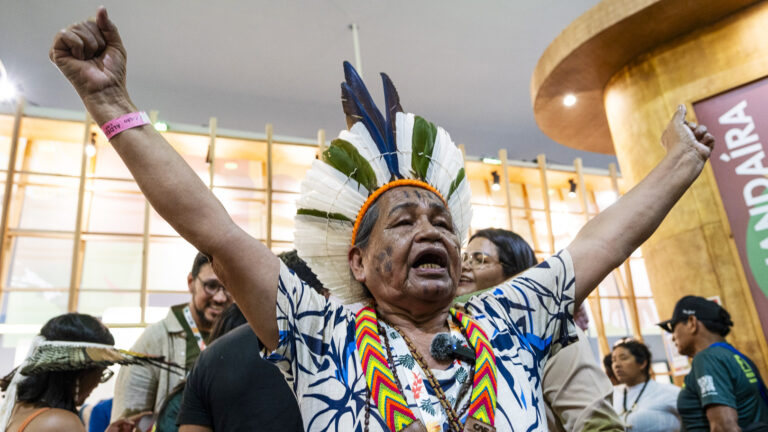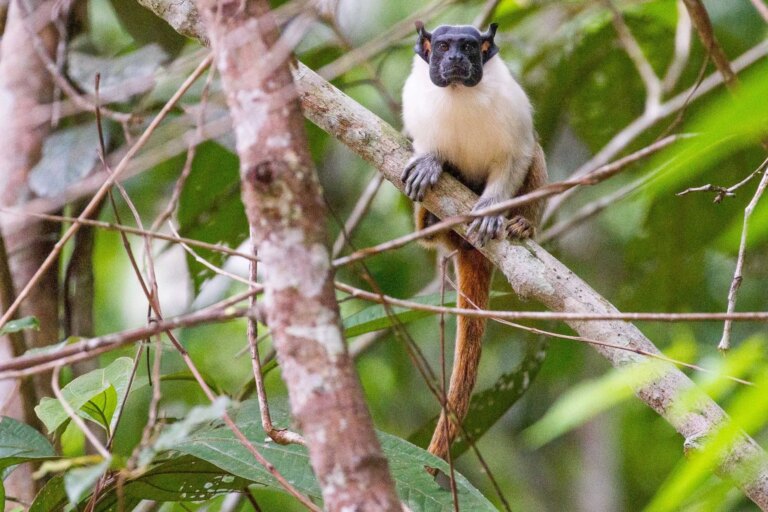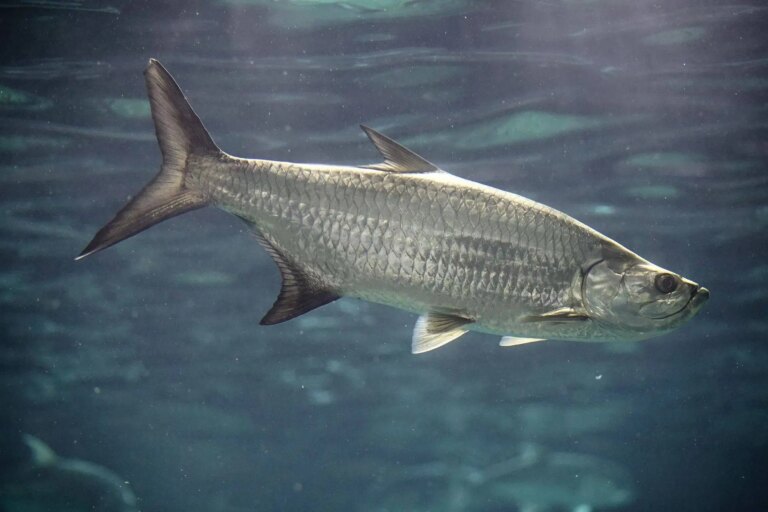Índice
ToggleThe Brazilian government has formally suggested to the United Nations that a permanent work program be established to kick-start the long-awaited integration of efforts between the environmental conventions designed since Rio92 – the landmark Earth Summit -, more than three decades ago.
One of the “homework assignments” defined at the 16th COP on Biodiversity, which began last November in Colombia and ended in February this year in Italy, was to submit national proposals to integrate the efforts of the conventions against the crises of Biodiversity, Climate, and Desertification.
By the last May 1 deadline, only Brazil and eight other countries had submitted their contributions to the secretariat of the United Nations Convention on Biological Diversity, the CBD. The total is less than 5% of the 196 nations linked to the agreement.
The Brazilian proposal calls for a work program to integrate points from all the conventions. The idea is that this should no longer be postponed or overshadowed by the agendas of each agreement, says Bráulio Dias, director of Conservation and Sustainable Use of Biodiversity at the Ministry of the Environment (MMA, acronym in Portuguese).
“The issue is not on the formal agenda for cooperation between the conventions, which is why Brazil has reinforced the importance of a continued effort to make this happen”, said Dias, who is also a former executive secretary of the CBD (2012 to 2017) and holds a PhD in Zoology from the University of Edinburgh (United Kingdom).
Brazil’s contributions emphasize that the integration of the conventions should ensure the protection of coastal and marine areas and indigenous, traditional, and vulnerable populations, respect ongoing actions and the realities of each country, and apply nature-based solutions – actions that utilize nature to address societal challenges, simultaneously benefiting both people and the environment.
The national submissions will be consolidated by the secretariat as recommendations to guide the debates of the Convention on Biological Diversity. One of these may take place at the end of October in Panama, at the meeting of its scientific group.
Just two weeks later, the 30th Climate COP begins in Brazil, but its formal agenda has not made room for smoothing cooperation between conventions. “The Brazilian leadership wants this to happen, but the challenge is how to make it happen”, said Dias (MMA).
The task is in the hands of the presidency of the 30th UN Climate Conference, led by the Brazilians ambassador André Corrêa do Lago and the national secretary for Climate Change, Ana Toni, who is on the executive secretariat of the event, to be held in November in the Belém, capital of the amazonian state of Pará.

Brazilian proposal
The drafting of Brazil’s proposal was coordinated by Bráulio Dias, who reviewed previous UN texts and adapted them to Brazil’s national needs in collaboration with various ministries, including the Ministry of Foreign Affairs, or Itamaraty..
“After sending the proposal to the CBD, Brazil has already met with countries such as Colombia, Germany, the United Kingdom, and the United Arab Emirates to discuss how to advance the synergy between the conventions”, he reported.
Before that, however, Brazilian civil society came together to try to help the country in this task. An event organized by the ngos The Nature Conservancy Brazil, WWF-Brazil, Instituto Alana, Instituto Arapyaú, and Climate Emergency Fund brought together about 50 other organizations to discuss the issue. Members of Itamaraty, the Ministry of Indigenous Peoples, and the Ministry of the Environment were also present.
Entitled “Connecting Climate and Nature: Recommendations for Multilateral Negotiations”, the event, held on April 15 and 16, aimed to systematize proposals on the themes of financing, public policies, nature-based solutions, and climate justice.
“Synergy is extremely important and is a major trend, because we don’t have the financial resources for everything, for example. The sum is enormous. We need to optimize the direction of our efforts,” says Simone Tenório, project coordinator at the ngo Institute for Ecological Research (IPÊ, acronym in Portuguese), another organization present at the meeting.
Place in the sun
Director of Public Policy and Government Relations at the NGO TNC Brazil, Karen Oliveira points out that the search for reconciliation is complex due to the lack of integrated and effective dialogue between the work programs and scientific bodies of the three conventions.
“This makes it difficult to build complementary action agendas and joint agendas to produce knowledge that is more applicable to this synergy”, she said.
Another stumbling block is the dispute over resources between conventions whose implementation still depends heavily on donations from rich countries, historically the major causes of pollution that raises average global temperatures.
“Of course, if you bring in new mechanisms, if you bring the private sector and the financial sector into this debate, you open up other opportunities”, said Karen Oliveira (TNC).
In this regard, Bráulio Dias (MMA) stated that the Brazilian Biodiversity Fund (Funbio) and the National Fund on Climate Change are examples of innovative sources. Others may come to COP30, such as the Tropical Forest Forever Fund, or TFFF.
“It is a voluntary initiative led by Brazil that will receive donations from public and private sources, so it will not need approval from conventions or governments”, he explained.
Presented at COP28 of the Climate Change Convention, the proposal projects that the equivalent of more than US$ 127 billion will be raised. The TFFF will pay countries for hectares of tropical forest maintained or restored.

Practical connections
The stitching together of agreements to jointly address major environmental crises can help ecosystems that naturally associate the themes of conventions born at Rio92, also known as the United Nations Conference on Environment and Development.
For example, restoring mangroves removes carbon dioxide (CO2) from the atmosphere — one of the villains of the global climate crisis — benefits biological diversity, reduces coastal erosion, and improves the supply of fish, crustaceans, and other foods, including for extractivists.
This is one of the cases listed in the Intergovernmental Platform on Biodiversity and Ecosystem Services (IPBES) in a report last December, reinforcing that the climate crisis and biodiversity loss must be addressed simultaneously.
According to the document, compiled by 165 global experts over more than three years, we can no longer ignore the growing impacts of our actions on the planet and the urgency of maintaining and restoring natural environments and their species.
Equally important, another study by IPBES and the Intergovernmental Panel on Climate Change (IPCC) pointed out that almost everything that is done for biodiversity benefits the climate, but that the reverse is not always true.
One example is the planting of exotic trees. This captures carbon, but can harm native plant and animal species. “They go around planting these trees anywhere, including in areas that are not tree ecosystems, such as natural fields”, said Bráulio Dias (MMA).
In addition to being large nurseries for coastal and marine life, Brazilian mangroves retain 1.9 billion tons of CO2, as reported by ((o))eco. These natural environments store three to five times more carbon than other terrestrial forests.
Despite strategic services such as these, biodiverse spaces are suffering a sharp global decline of 2% to 6% per year, according to IPBES. The blame lies with humans, who deforest, hunt, pollute, spread invasive species, and exploit them beyond measure.
At the same time, the climate crisis is exacerbating this planetary drama. If maximum temperatures continue to rise, 50% to 95% of global species will face the risk of extinction.

These alarming figures come from an article published in March in Oxford Open magazine, which found that species losses were more frequent where temperature changes were greater and faster.
This all leads to a new mass extinction of life forms. As a result, environmental services are at high risk of collapse, such as the pollination of agricultural crops by insects and mammals, water purification in wetlands, and climate regulation itself.
The results would be disastrous for the planet’s ecological balance and for all human societies.
“We cannot adapt to a collapse in biodiversity, we can only suffer it with an inevitably fatal outcome”, said François Brechignac, vice president of the International Union of Radioecology (IUR), on social media.
This story was originally published in Portuguese. The translation to English was done with the assistance of Artificial Intelligence, with final review by a human. For this story, the review was done by the reporter Cristiane Prizibisczki
As informações apresentadas neste post foram reproduzidas do Site O Eco e são de total responsabilidade do autor.
Ver post do Autor








